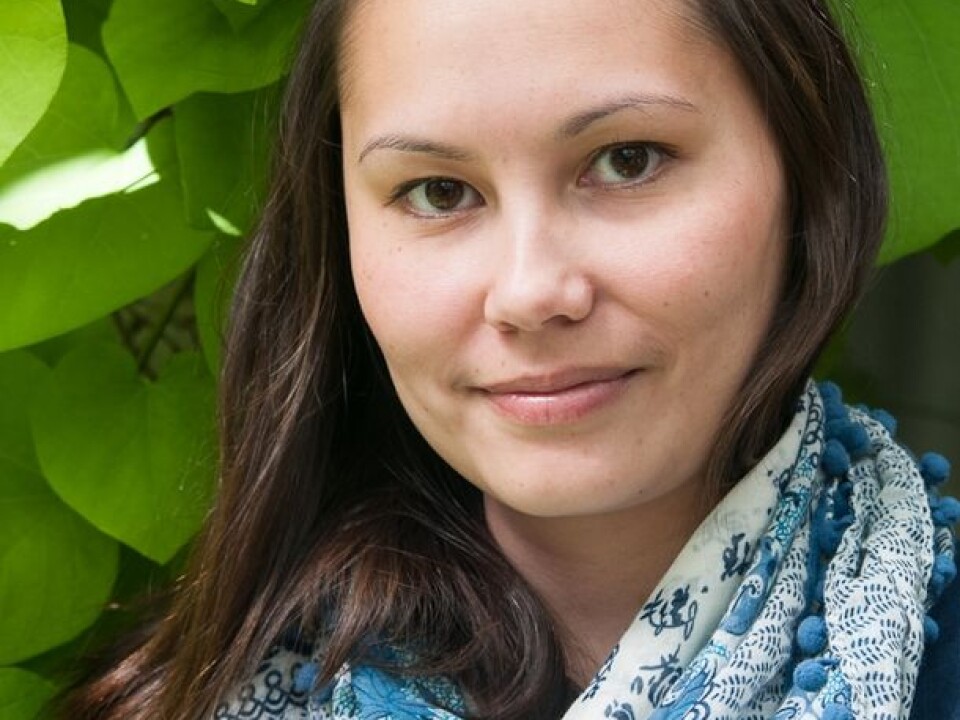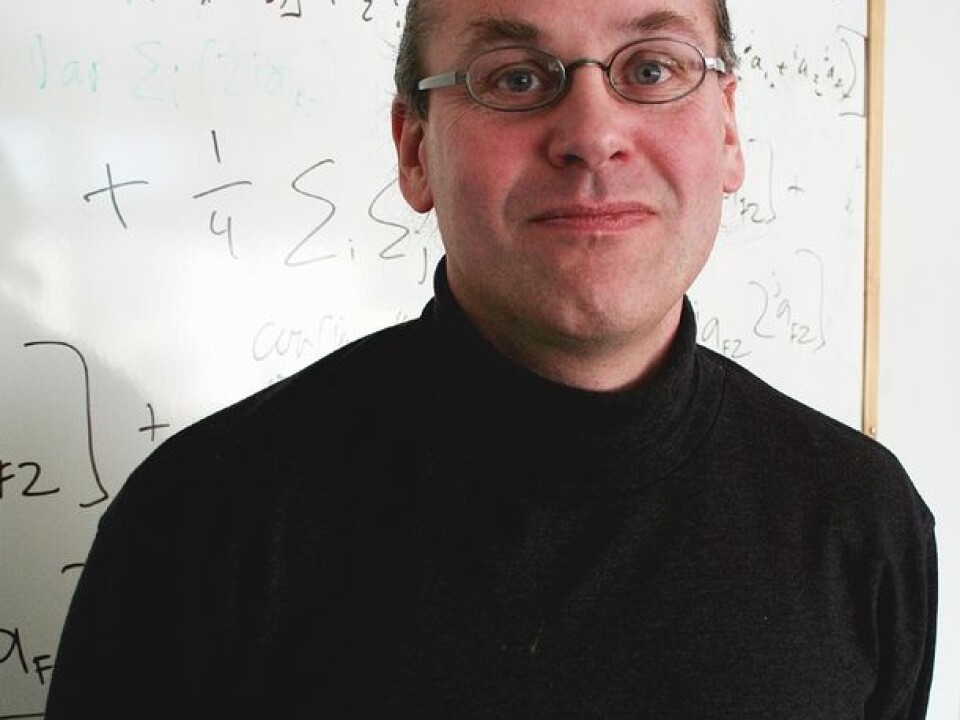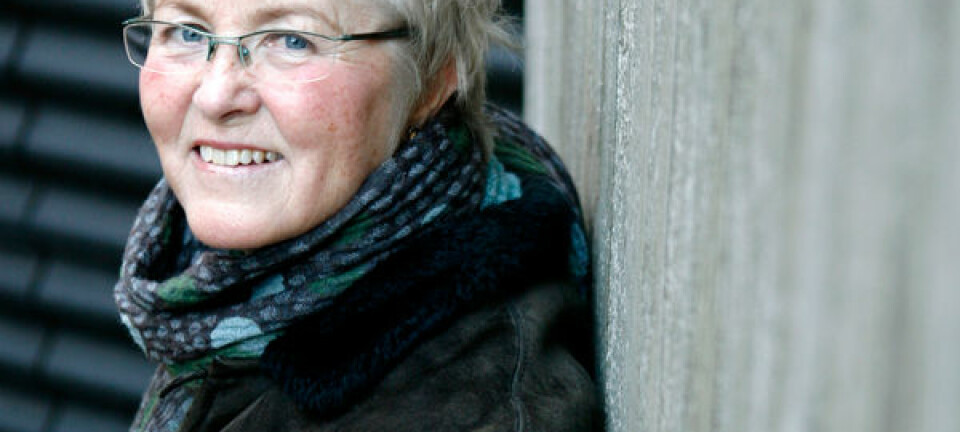
Biologists often numbed by numbers
Biologists often find their analytical aptitude falls short of the mark when dealing with complicated data. It can mean that their research strays off target too.
Denne artikkelen er over ti år gammel og kan inneholde utdatert informasjon.
Biology isn’t simply a subject where you, say, determine the colours of a giraffe or where it lives. The science also involves work like quantifying herds at given sites or analysing changes in the spots on their hides in the past 50 years.
In other words − numbers, mathematics and statistics are essential tools of the trade for biologists too. But they aren’t always up to snuff. Silje Skår is a biostatistician educated at the Norwegian University of Science and Technology (NTNU) and a doctoral research fellow at the Norwegian Forest and Landscape Institute. She thinks the situation is serious:
“I see biologists talking about statistics but too frequently they’re clearly on thin ice,” she says.
“Sometimes it doesn’t matter much but in a worse case it has a big impact on their results.”
Wrong model

“In general, you can say the models biologists use for analysing their data aren’t made for the type of information they’ve collected.”
Her daily work entails analysing the data gathered by a research project evaluating the bioenergy potential of Norwegian forests. She’d like more focus on what she considers a blatant problem in biology.
“The models are used in good faith. But if you look at the criteria for their use you see the data doesn’t conform. For instance, they might have made insufficient observations,” says Skår.
“Many biologists use models that are too advanced, or too simple. Often they’ve simply been tipped off by a colleague about what model to use and they do so uncritically.”

Skår stresses that as a statistician she respects the efforts involved in collecting biological data and that it’s easy to sit in an office and complain about a lack of observations − without doing the fieldwork herself.
“But that just makes it all the more important to use the models right so reliable results can be extricated from the actual material.”
Also in thesis presentations
Nils Christian Stenseth, the head of the Centre for Ecological and Evolutionary Synthesis (CEES) at the University of Oslo, agrees with Skår’s diagnosis.
“Of course there’s a lot of variation but many do have insufficient knowledge of maths and statistics. This is a common problem I encounter almost daily,” he says.

After all, few biologists have chosen their career because of a great fondness for calculations and regression analysis – otherwise they would have become statisticians or mathematicians.
The problems spring up when biological analyses actually depend on mathematical tools. Things can go astray quite quickly when you lack a comprehension of the basic prerequisites for analysis.
“Unfortunately, many seem to think they can do their biological work without good statistical capabilities, but that’s getting tougher and tougher,” he says.
“So they try to compensate by writing computer programs that run the analyses for them. That’s not a bad idea but you have to know what’s being done. If not you risk using the software completely wrong and misinterpreting what’s actually been calculated.”
Stenseth says he sees examples of faulty use of statistics at seminars, conferences and in doctoral dissertations.
“There are quite a few published results out there that don’t rally stand up due to the use of incorrect methods,” says Stenseth.
Too much statistics – not too little
Thomas Hansen is a theoretical evolutionary biologist at CEES and a colleague of Stenseth. He’s published studies demonstrating the misuse of statistics in biology. But he doesn’t agree that a substandard grip on statistics is the key problem:
“I agree that we have a problem and it involves an exaggerated respect for statistics and overusing this math. The difficulty is they rely on statistics to get the answers, instead of using it as an aid or a tool on the path to finding the answers,” he says.
“Biology lacks theory about meaning. It’s fundamental to know that the way you quantify something is linked to the underlying realities – for instance how an IQ test represents something that can be called intelligence.”
Biology is devoid of any such debate, according to Hansen:
“They use the statistics they’ve been taught in courses where they’ve learned to use certain tests or methods they feed their data into and they think this gives it meaning. It’s done without reflection on what is being measured in the model.”
“You have to make interpretations to get the results. People don’t fathom that statistics just provide the raw material that has to be interpreted to achieve an answer. Perhaps some biologists would be more adept at interpreting the biological meaning of their findings if they weren’t so dazzled by the statistics.”
Too much math − too few citations
Norway isn’t the only country with this problem. A recent study from the University of Bristol in the UK has revealed that scientific articles in the field of biology with the most equations and math in the text get quoted half as often as articles with little or no mathematics.
So math isn’t what makes an article more likely to make the rounds – perhaps the contrary. Stenseth agrees with Hansen that the scales sometimes tip the other way, towards too much use of statistics.
“Errors can definitely be made either way. It’s not always necessary to bombard articles with technical details, calculations and regression analyses. These can be relegated to the supplements if deemed necessary. Too many researchers rely on statistics and fail to actually explain what the results are,” says Stenseth.
Not how, but what and why
Whether the predicament is caused by too much knowledge of statistics or too little, it’s still a problem.
But the solutions differ. Hansen would like to see biologists become more confident about making analyses without using statistics as a crutch.
Stenseth calls for more comprehension of math and statistics, at least a modicum:
“You don’t need to be immersed in math skills but you need a certain understanding of the prerequisites, suppositions and the basis for using the methods that you’ve chosen. Nor do you have to conduct the analyses yourself, or even be capable of it. But you have to know what is being done and why.”
Translated by: Glenn Ostling
Scientific links
- D. Houle m.fl. (2011) Measurement and Meaning in Biology. Quarterly Review of Biology, vol. 86, nr. 1, page 3-34
- T.W. Fawcett og A. D. Higginson (2012) Heavy use of equations impedes communication among biologists. PNAS, published online june 25, 2012
































